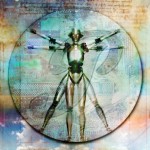co·her·ence (k -hîr
-hîr
 ns, -h
ns, -h r
r -)
-)
n.
i.e. Consistency and accordance with the facts; antonym: incoherent “a rambling argument that lacked any consistency”
It’s easy for skeptics to offer various explanations for each point of the minimal facts argument for Jesus resurrection. But for their account to be feasible, each answer must be coherent with the others and the totality of the evidence. For instance, crazypills2 wants to offer that Jesus body was stolen as an answer for the empty tomb. Yet the disciples belief in Jesus resurrection was based on appearances not the empty tomb. In fact, Mary Magdalene’s first offering was that, “They have taken the Lord out of the tomb, and we do not know where they have laid him.” (Jn. 20:2b) No one assumed or expected resurrection, they believed because they saw Jesus. When one looks at the empty tomb in light of the disciples sincere belief that Jesus physically appeared to them, theft of the body is rendered inconsistent. So can hallucinations account for the appearances?
While it is true that distraught individuals may hallucinate, the disciples describe touching Jesus and group hallucinations are not feasible on naturalistic grounds. Offering appearances of the alleged virgin Mary (likely a deception) actually backfires by evidencing the supernatural more than it does hallucination. Either way, his asserting Mairan apparitions to evidence group hallucination is merely an assumption at best. Furthermore, Paul was not psychologically predisposed to see Jesus and neither was James (Mk. 3:21). In fact they were biased in the opposite direction. So expectation bias/bereavement causing hallucination fails to account for the appearances. Additionally, the claim that Paul merely had a vision is not consistent with Paul’s stated beliefs. Paul wrote of a physical material resurrection body and Jesus “in the flesh” in many places (Rom. 1:3, 2 Cor. 5:16, Rom 9:5) and he describes the resurrection body as the lowly earthly body in a transformed state (Phil. 3:21). It is incoherent to claim Paul did not believe in a solid physical resurrected Jesus.
What are the odds that the disciples all shared hallucinations, including multi-sensory experiences of touching, seeing, and hearing combined with the improbability of a skeptic like James and an enemy in Paul having visions of the same Jesus? These “hallucinations” would have to be so convincing as to prompt such a radical shift in world view that Paul and James would give their very lives… now that would take a miracle!




